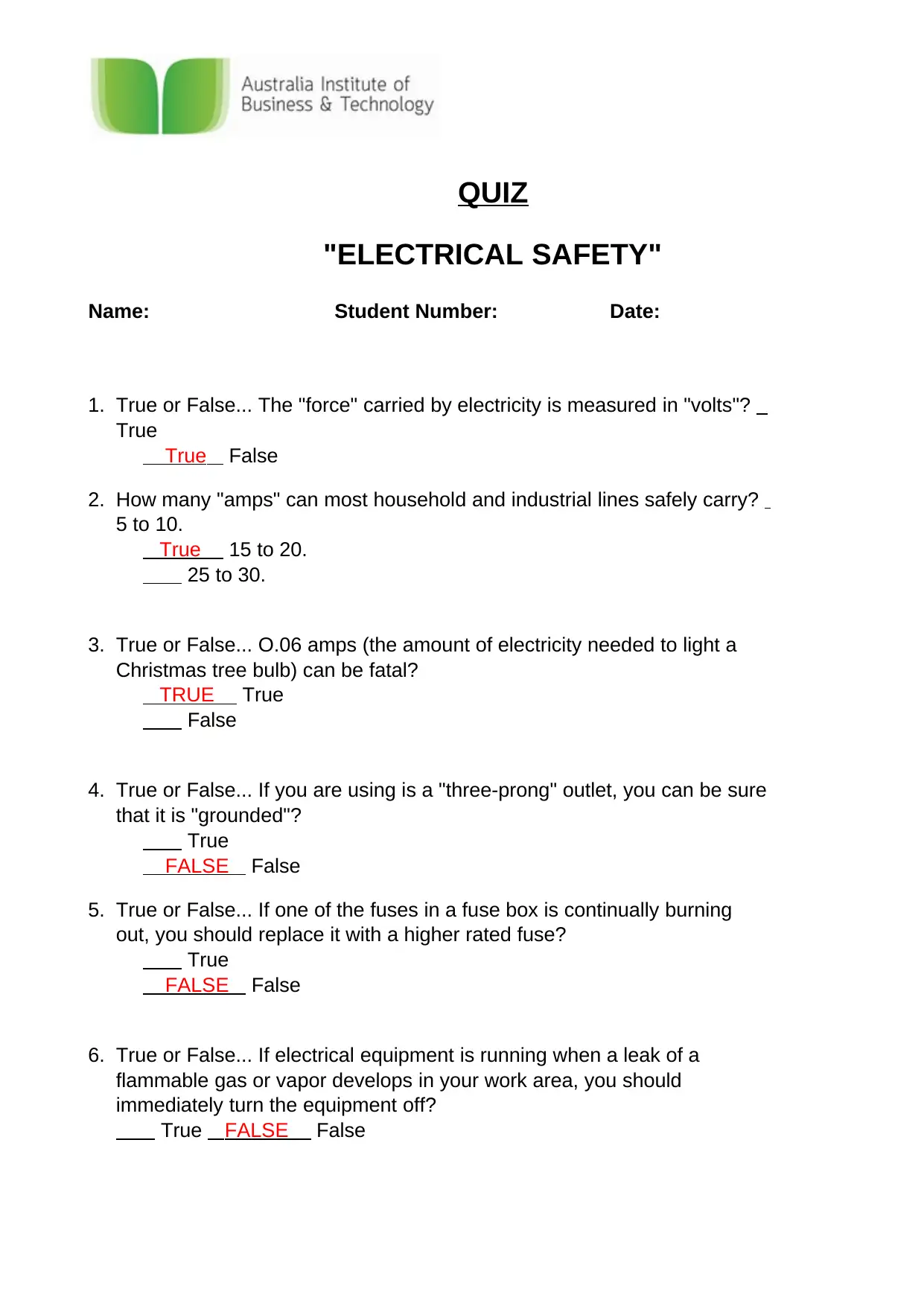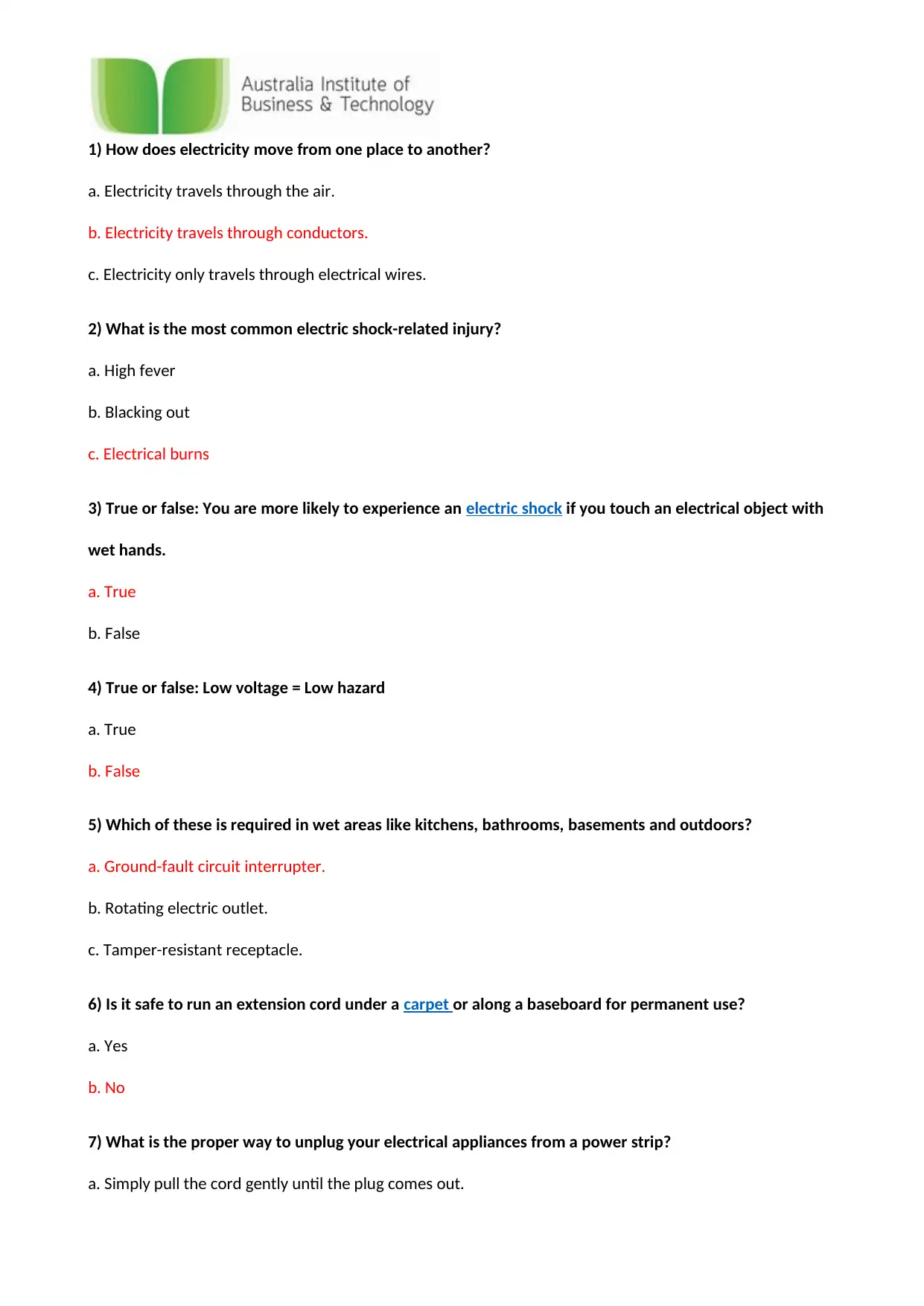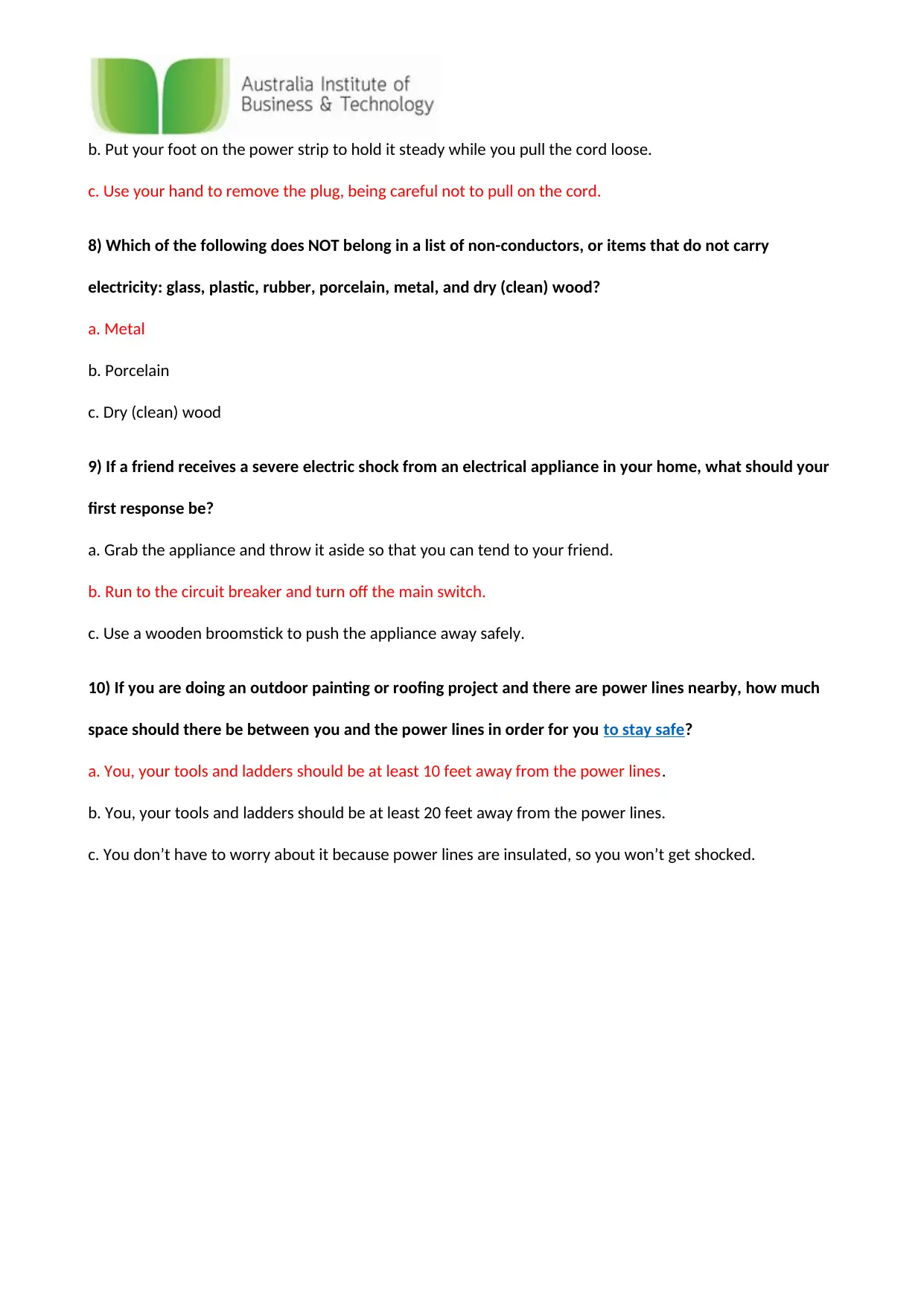Electrical Safety Quiz: Essential Concepts and Practices
VerifiedAdded on 2021/06/17
|3
|637
|171
Quiz and Exam
AI Summary
This assignment is an electrical safety quiz designed to assess understanding of key concepts related to electrical safety. The quiz covers topics such as the measurement of electricity, safe current levels, the dangers of electric shock, the importance of grounding, and the use of circuit breakers. Questions also address safe practices for using electrical appliances, the properties of conductors and non-conductors, and emergency responses to electrical shocks. Furthermore, the quiz includes questions on maintaining a safe distance from power lines during outdoor projects. The quiz is a valuable tool for anyone seeking to learn more about electrical safety and how to prevent accidents.
1 out of 3




![[object Object]](/_next/static/media/star-bottom.7253800d.svg)